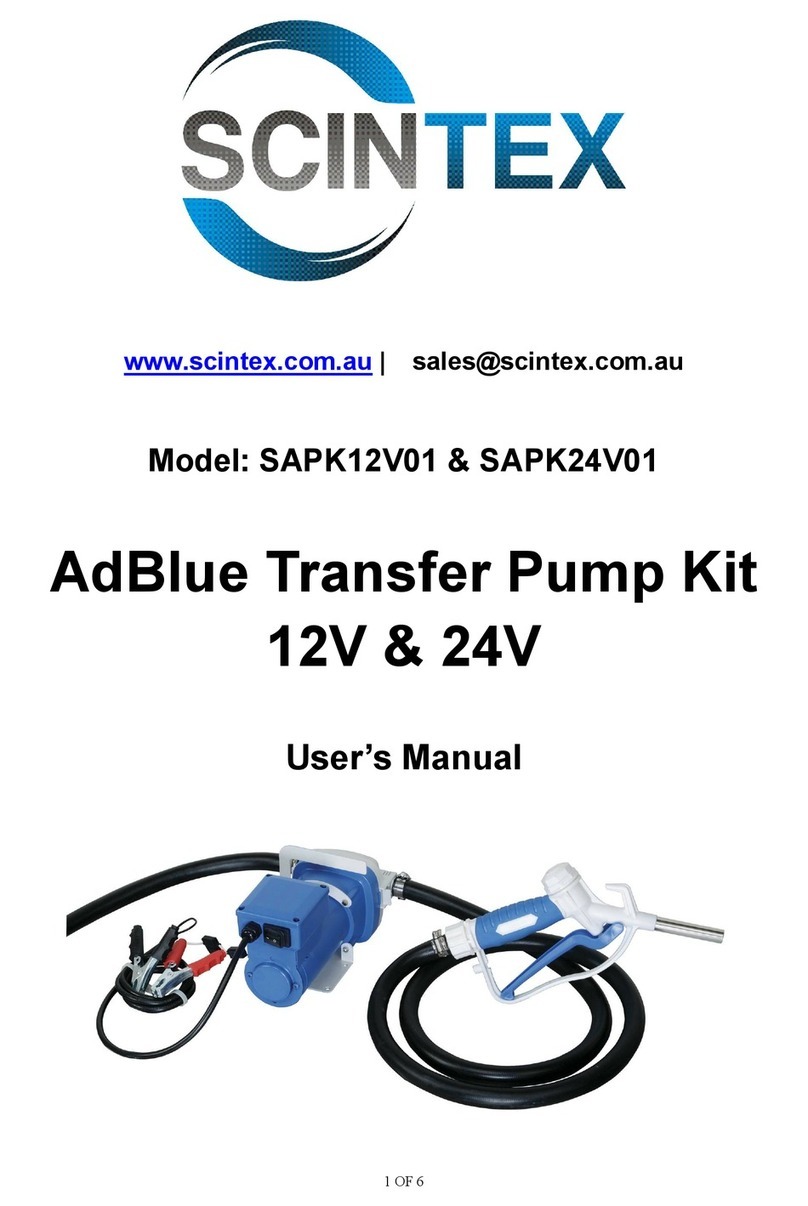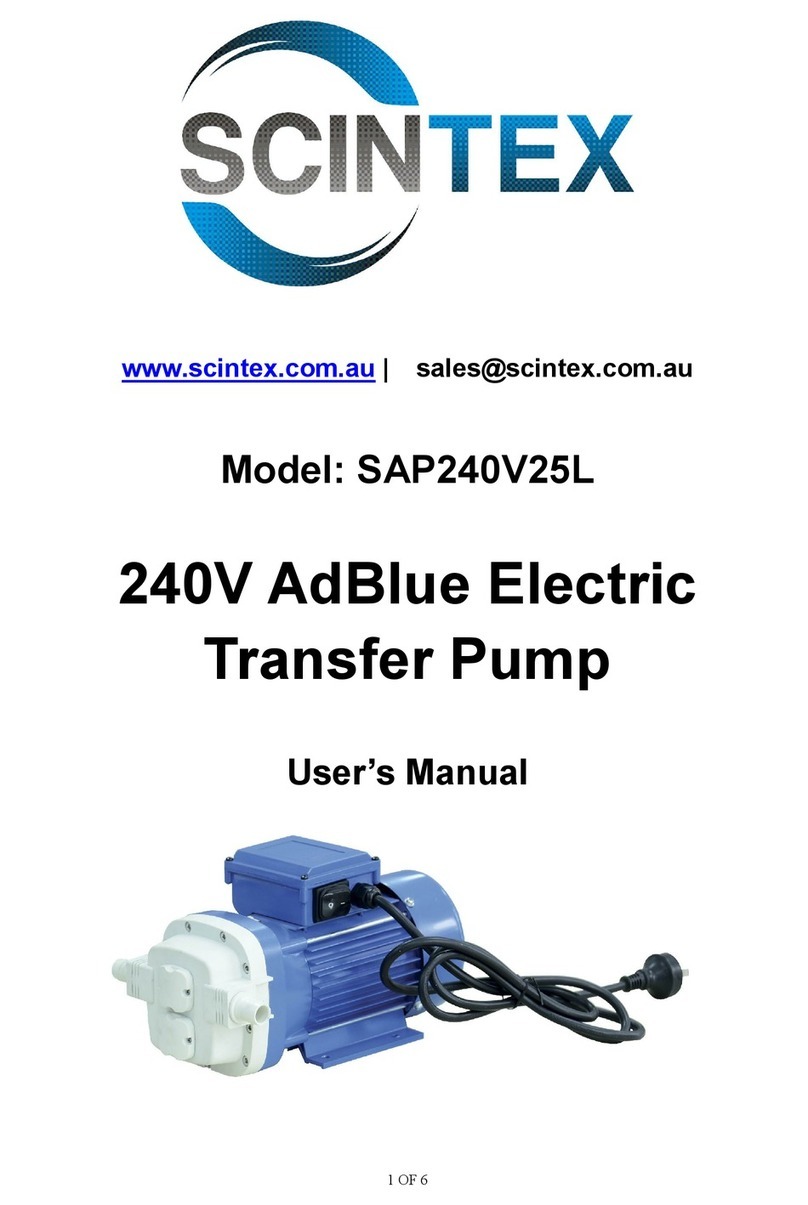
8
4. Before to Install warnings
Pump’s installation and operativity is made in 4 main steps:
Pump’s installation
Hydraulic Installation (hoses, level probe, injection valve)
Electrical Installation (main power connection, priming)
Programming the pump.
Before to start, please read carefully the following safety information.
Protective clothes
Wear always protective clothes as masks, gloves, safety glasses and
further security devices during ALL installation procedure and while
handling chemicals.
Installation location
Pump must be installed in a safety place and fixed to the table / wall to
avoid vibration problems!
Pump must be installed in a easy accessible place!
Pump must be installed in vertical position!
Avoid water splashes and direct sun!
Hoses and Valves
Suction and delivery hoses must be installed in vertical position!
All hoses connections must be performed using only hands’ force!
No tongs required!
Delivery hose must be firmly fixed to avoid suddenly movements
that could damage near objects!
Suction hose must be shorter as possible and installed in vertical
position to avoid air bubbles suction!
Use only hoses compatibles with product to dose! See chemical
compatibility tabl.
If dosing product is not listed please consult full compatibility table or
contact chemical’s manufacturer!
Feeder should be interlocked with a no-flow protection device to automatically
shut-off the pumps when there is no flow!
Adequate measures shall be taken to prevent cross connection of chemicals!
Chemical feeding must be stopped during backwash cycles and periods of no-
flow as these conditions may introduce the potential for chemical overdosing.
Not doing so may result in elevated chemical concentrations and hazerdous
gas introduction into the pool or spa.




















